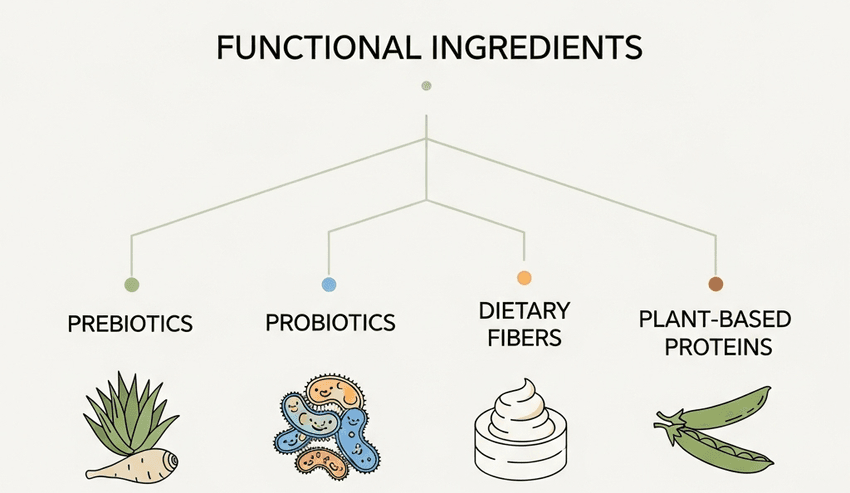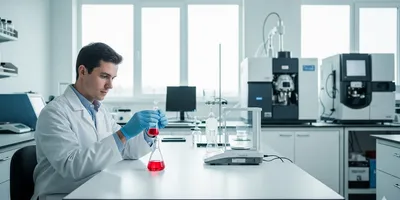In the complex landscape of the food industry, the term "processed foods" often carries a misleading connotation of being unhealthy or unnatural. However, in a scientific context, food processing encompasses a wide range of techniques, from a simple cut and wash to more complex manufacturing processes. These methods are essential for ensuring food safety, extending shelf-life, and making a diverse range of products accessible to a global population. For the modern food professional, understanding how science is actively improving these processes is key to developing products that are not only safe and stable but also align with consumer demands for higher quality and better nutrition.
Food science and technology are continuously evolving to transform processed foods. This evolution is driven by advances in microbiology, chemistry, engineering, and nutrition, allowing for the creation of products that are more wholesome and beneficial. From targeted nutrient fortification to the development of functional ingredients and sustainable processing methods, science is at the forefront of a movement to redefine the quality and purpose of processed foods. This new era of food processing focuses on precision, efficiency, and a deep understanding of food matrices to deliver products that are both convenient and health-conscious.
Enhancing Processed Foods with Nutrient Fortification
One of the most significant contributions of food science to processed foods is the strategic addition of essential nutrients. Food fortification is the practice of deliberately increasing the content of an essential micronutrient, such as vitamins and minerals, in a food product. This method has been a key strategy in public health for decades, effectively combating widespread nutrient deficiencies.
The scientific challenge lies in ensuring that these added nutrients remain stable throughout processing and are bioavailable to the human body. Bioavailability refers to the proportion of a nutrient that is absorbed and utilized by the body after consumption. Research in this area focuses on:
- Nutrient Encapsulation: Protecting sensitive vitamins (like Vitamin C and folic acid) from degradation due to heat, light, or oxygen by encasing them in a protective matrix. This ensures their survival throughout the processing chain and extends their shelf life.
- Optimizing Nutrient Form: Using specific forms of minerals (e.g., ferrous fumarate over other iron compounds) that are less reactive and more readily absorbed.
- Synergistic Nutrient Combinations: Formulating products with nutrients that enhance each other’s absorption. For example, adding Vitamin D to milk enhances calcium absorption, a well-established scientific principle.
Functional Ingredients: The Future of Healthier Processed Foods
Modern food science is moving beyond basic nutrition to incorporate functional ingredients into processed foods. These are components that provide health benefits beyond their basic nutrient content. The integration of such ingredients is a key strategy for developing a new generation of processed foods that proactively contribute to consumer wellness.
Key areas of research and application include:

Functional foods provide benefits beyond their nutritional content.
GEMINI (2025)
- Prebiotics and Probiotics: Probiotics are live microorganisms that confer a health benefit to the host, while prebiotics are non-digestible food ingredients that promote the growth of beneficial microorganisms in the gut. The science of incorporating these into processed foods requires a deep understanding of their stability under various processing and storage conditions.
- Dietary Fibers: Many processed foods are now being fortified with various types of dietary fiber, such as inulin or beta-glucan. These are recognized for their roles in digestive health, blood sugar management, and cholesterol reduction.
- Plant-Based Proteins: The rising demand for plant-based products has spurred significant scientific innovation. Researchers are developing new methods to extract, texturize, and formulate plant proteins to mimic the sensory properties of meat and dairy, while ensuring their nutritional completeness.
Advanced Technologies for Processed Food Safety
Scientific advancements in preservation technologies are fundamentally reshaping the safety and shelf-life of processed foods. Modern methods go beyond traditional heating to achieve microbial control while better preserving product quality. This is a critical area of research for minimizing the impact of processing on taste, color, and texture.
Examples of these advanced technologies include:
- High-Pressure Processing (HPP): Using hydrostatic pressure to inactivate microorganisms. This non-thermal method is effective for extending the shelf life of juices, meats, and seafood while retaining their fresh attributes.
- Pulsed Electric Fields (PEF): Applying short bursts of high-voltage electricity to permeabilize microbial cell membranes, leading to their inactivation.
- Modified Atmosphere Packaging (MAP): Precisely controlling the gas composition inside a package to slow down spoilage reactions and microbial growth.
- Predictive Microbiology: Utilizing mathematical models to predict the growth and inactivation of microorganisms under specific environmental conditions (e.g., temperature, pH). This allows food scientists to design processing protocols with a high degree of precision and confidence.
Sensory Science: Improving Taste and Texture
No matter how nutritious or safe a processed food is, it will not succeed if it is not appealing to eat. Sensory science is a crucial discipline dedicated to measuring, analyzing, and interpreting human responses to products as perceived through the senses. This field ensures that scientific improvements in safety and nutrition do not come at the expense of taste and texture.
Key scientific applications in this area include:
- Flavor Chemistry: The study of the chemical compounds that contribute to flavor. Scientists use advanced analytical techniques like gas chromatography–mass spectrometry to identify and replicate desirable flavor profiles and to mitigate off-flavors that might develop during processing or storage.
- Texture Analysis: Measuring the mechanical properties of food, such as hardness, chewiness, and crispiness. Instruments are used to objectively quantify texture, which is a major determinant of consumer acceptance.
- Consumer Panels: Conducting scientifically structured taste panels to gather consumer feedback on new product formulations. This data provides critical guidance for optimizing the sensory attributes of processed foods.
Sustainability and Waste Reduction in Processed Foods
Food science is not only making processed foods better for the consumer but also for the planet. Scientific advancements are addressing major sustainability challenges, including food waste and energy consumption.
- Upcycling Food Byproducts: Research is focusing on how to transform food byproducts and waste streams into valuable new ingredients. For example, extracting antioxidants and fibers from fruit peels or using brewer's spent grain as a source of protein and fiber for new products.
- Sustainable Packaging Innovations: Developing food packaging materials that are biodegradable, compostable, or more easily recyclable. This reduces the environmental footprint of processed foods.
- Energy-Efficient Processing: Engineering new equipment and processes that require less energy and water, such as those used in continuous processing systems.
The Scientific Revolution of Processed Foods
The narrative around processed foods is undergoing a fundamental transformation, driven by rigorous scientific innovation. By addressing challenges in nutrition, safety, and sustainability, food science is elevating the quality and purpose of processed foods. The application of advanced technologies—from targeted fortification to precision preservation—is creating products that are both safe and beneficial. For laboratory professionals, expertise in these areas is a cornerstone of a career dedicated to creating a more nutritious, secure, and sustainable global food supply.
Frequently Asked Questions about Processed Foods
Are all processed foods unhealthy?
Lab Management Certificate
The Lab Management certificate is more than training—it’s a professional advantage.
Gain critical skills and IACET-approved CEUs that make a measurable difference.
No, the term "processed foods" covers a wide spectrum. Many minimally processed foods, such as washed and packaged salads or roasted nuts, can be very healthy. The healthfulness of a processed food depends on its ingredients, nutrient content, and how it is manufactured.
How does food science make processed foods safer?
Food science ensures safety through a combination of technologies. This includes using precise thermal or non-thermal processing to inactivate pathogens, adding antimicrobial preservatives to prevent spoilage, and utilizing advanced packaging to protect against contamination.
What is the role of food engineering in improving processed foods?
Food engineering is a critical discipline that designs and optimizes the equipment and processes used to manufacture food. It is responsible for creating systems that ensure consistent product quality, maximize efficiency, and apply scientific principles to improve food safety and nutrition on a large scale.
How is science reducing waste in the production of processed foods?
Science is tackling waste by developing methods to upcycle byproducts, such as turning fruit peels into valuable extracts. It is also creating more efficient processing techniques that minimize waste and developing sustainable packaging materials that are easier to recycle or biodegrade.














